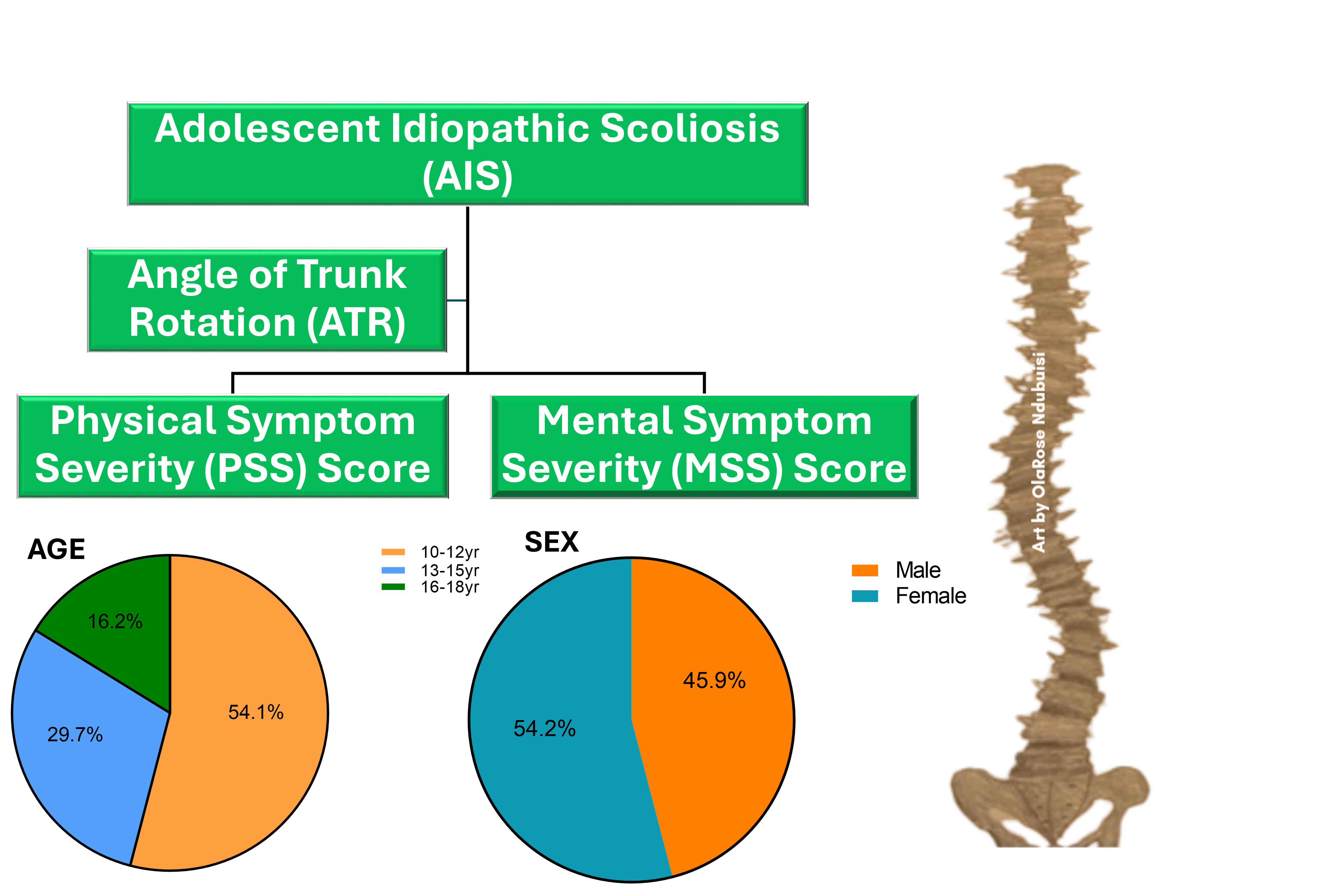Adolescent Medicine 5: Potpourri
Session: Adolescent Medicine 5: Potpourri
136 - Correlation of Angle of Trunk Rotation with Physical and Mental Health Symptoms in screening for Adolescent Idiopathic Scoliosis in South East, Nigeria
Monday, April 28, 2025
7:00am - 9:15am HST
Publication Number: 136.4467
OlaRose Ndubuisi, Pittsford Mendon High School, Pittsford, NY, United States; Okechukwu N. Mezu, North Ridgeville High School, North Ridgeville, OH, United States; Harshvardhan Tiwary, University of Rochester School of Medicine and Dentistry, Rochester, NY, United States; Kelechi Mezu-Nnabue, Mezu International Foundation, Pikesville, MD, United States; Olachi J. Mezu-Ndubuisi, University of Rochester School of Medicine and Dentistry, Rochester, NY, United States

OlaRose Ndubuisi (she/her/hers)
Student
Pittsford Mendon High School
Pittsford, New York, United States
Presenting Author(s)
Background: Adolescent idiopathic scoliosis (AIS) is a curvature of the spine affecting 2% to 4% of adolescents, with no known etiology. Lack of objective screening and awareness of physical and mental health effects of scoliosis may delay diagnosis in resource-limited areas. We correlated for physical and mental symptoms in adolescents in South-East Nigeria with angle of trunk rotation (ATR) measurements.
Objective: 1. To correlate physical and mental health symptoms of scoliosis with angle of trunk rotation.
2. To identify children that need referral for increased risk for scoliosis.
3. To increase awareness of physical and mental health symptoms to look at for in children with scoliosis.
Design/Methods: A cross-sectional survey was administered to 37 children aged 10-19 years in a medical mission population following IRB approval. A questionnaire assessed Physical Symptom Severity (PSS) score and Mental Symptoms Severity (MSS) score. Adam’s Forward Bend Test was performed to assess for scoliosis and measure ATR using a scoliometer.
Results: Participants were aged 10-12 (54%), 13-15 (29.7%), and 16-18 (16.2%) years. 54.2% were female (n=20), 45.9% were male (n=17). ATR correlated with PSS (r=0.33, p=0.0497), but not MSS (r=-0.12, p=0.47). PSS correlated with breathing problems (r=0.15, p=0.0188), constipation (r=0.404, p=0.1631), motion sickness (r=0.39, p=0.0172), and signs of body asymmetry (r=0.59, p=0.0003). MSS correlated positively with age (p=0.0068) and highest education (p=0.0192). ATR was higher in participants who reported comparing themselves with peers or classmates (r=-0.33, p=0.0490). Shoulder blade prominence (p=0.02), rib prominence (p=0.158), and having head not line up with pelvis were associated with ATR (p=0.0389). 78% (n=29) were referred for ATR of 5 or higher.
Conclusion(s): High school aged children at risk for AIS had increased physical and mental health symptoms. ATR could be a useful objective tool for AIS, particularly in resource-limited communities.
Graphical Abstract
 Correlation of Angle of Trunk Rotation to Physical and Mental Symptoms Severity
Correlation of Angle of Trunk Rotation to Physical and Mental Symptoms Severity 
